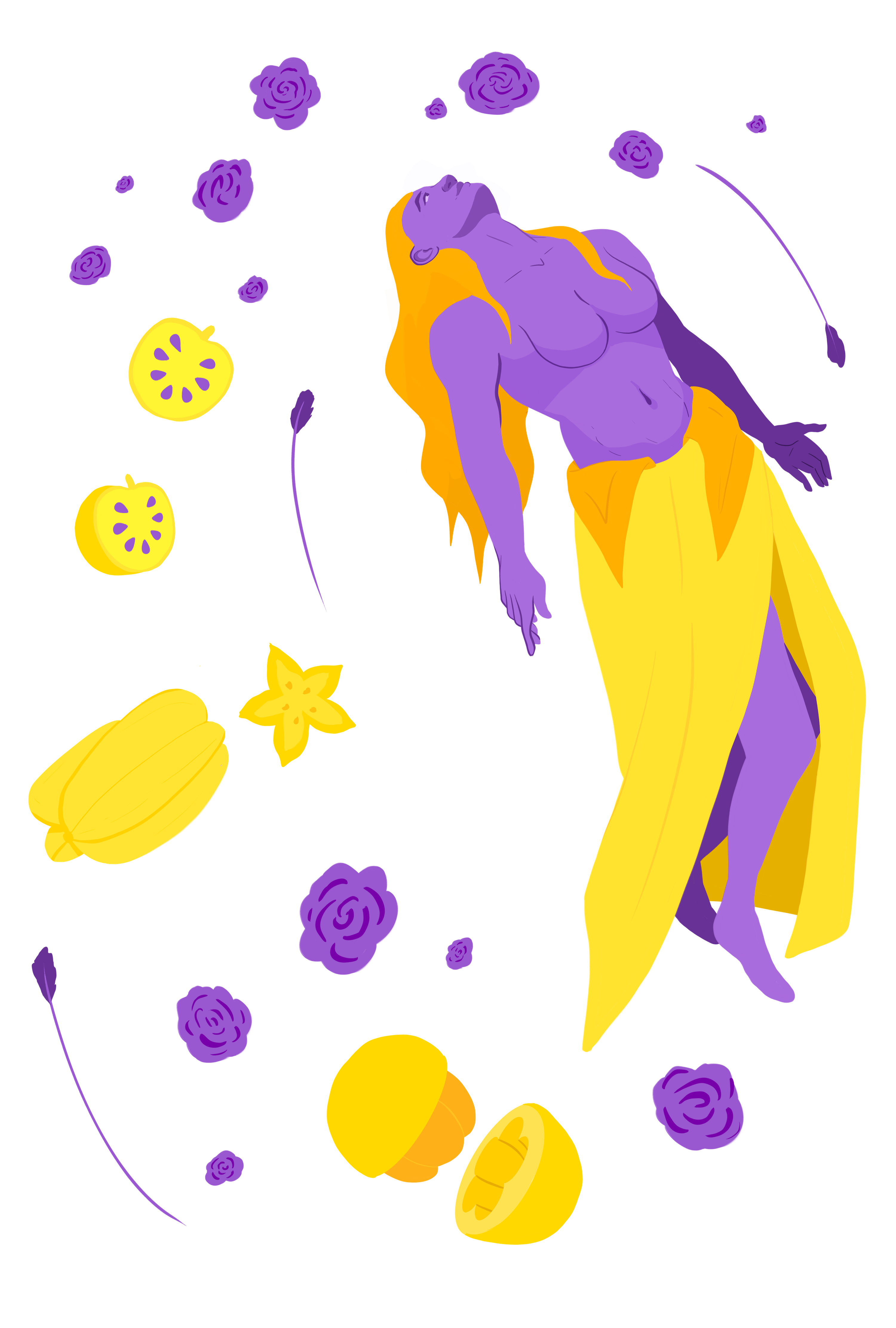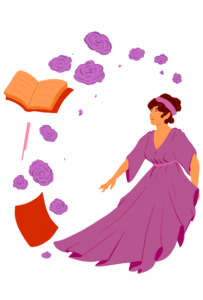
Lesbian – Sappho
Born in 620 BCE, Sappho of Lebos is known for her poetry and its depictions of her love for another woman. Sappho is the origin for ‘Sapphic’ which describes the romantic love between women (or non-men). So does the term ‘Lesbian,’ named after her homeland. In the piece depicting Sappho, she is drawn using the palette for the Comunity Lesbian flag, sometimes referred to as the lesbian sunset flag, along with her poetry and specifically carved wooden tools for writing.
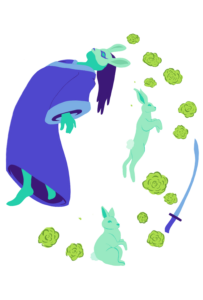
Gay – Tu’er Shen
Tu’er Shen (or Tu Shen) the Chinese Rabbit God was worshiped primarily in the 18th century. His legend is one of tragedy, where in a male human form (named Hu Tianbao) falls in love with another man in the military, and is put to death because of it. He’s reborn into the god we know. (Depending on who you ask, the rabbit iconography can be linked to either a version of the story where he’s turned into a rabbit for a year before becoming a deity, or a reference to a nickname for gay men of the time: “Rabbits”)

Bisexual – Senda
Senda is an Inuit goddess of the ocean and marine animals. She’s often referred to as a mermaid / mother of the sea. According to some versions of the legend, her father, a god named Anguta, takes her out in a kayak and cuts off her fingers (reasons vary from telling to telling) which become seals, walruses and whales. She’s said to live at the bottom of the ocean with her female partner. Her tail is one of Arctic Char, found in Nunavut Canada, an Inuit territory. The top left is a blubber cutter, used to butcher seals and other mammals’ blubber. The bottom right is an Inuit kayak oar, long and narrow, to maneuver through icy water.
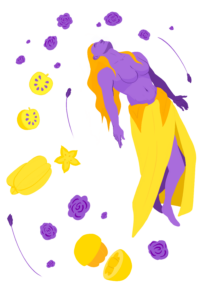
Non-binary – Lakapati (Ikapati)
Lakapati is the Tagalog god of harvest and fertility. They’ve been depicted in many ways throughout history: feminine, masculine, and outside the binary that was set post-colonization. In today’s terms, they’re seen as transgender, intersex, and/or non-binary. I chose to depict them with both the colors from the intersex and non-binary flag colors (the flags have a very similar pallete). Around them are atis, nalimning, and santol, all fruits from the Philippines which represent the harvest.
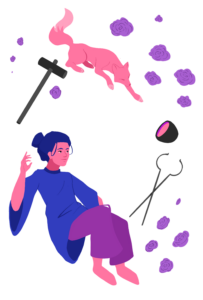
Genderfluid – Inari
Inari is a Shinto fox deity from Japan. Inari was worshiped in a blacksmithing capacity during the 16th century, but evidence suggests that they’ve been around since 711 AD. Inari has many forms, one a bearded old man riding a fox, another young woman carrying rice, some of their non-human forms even range from a dragon to a giant spider. In one of their most famous legends, while gaining their place as a blacksmithing god, they appear as a young boy. The tale says that emperor Ichijō commissioned a sword, and the man hired to do so prays for a smith partner of equal skill. Inari shows up as the young boy and together they forge Kogitsune-Maru (little fox). My piece includes smithing equipment from the 16th century, as well as Inari’s fox form beside them.
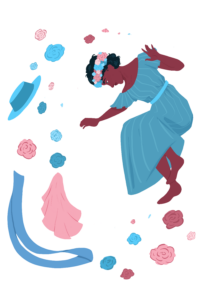
Trans – Marsha P. Johnson
Born in 1954, Marsha P Johnson is best known for her part in the 1969 Stonewall Uprising. She’s become a modern legend within the Trans community today. In the piece, she’s depicted in the trans flag, pastel blues and pinks, and items around her are from famous photography of Johnson in the sixties, including banners, hats, dresses and flower crowns.

